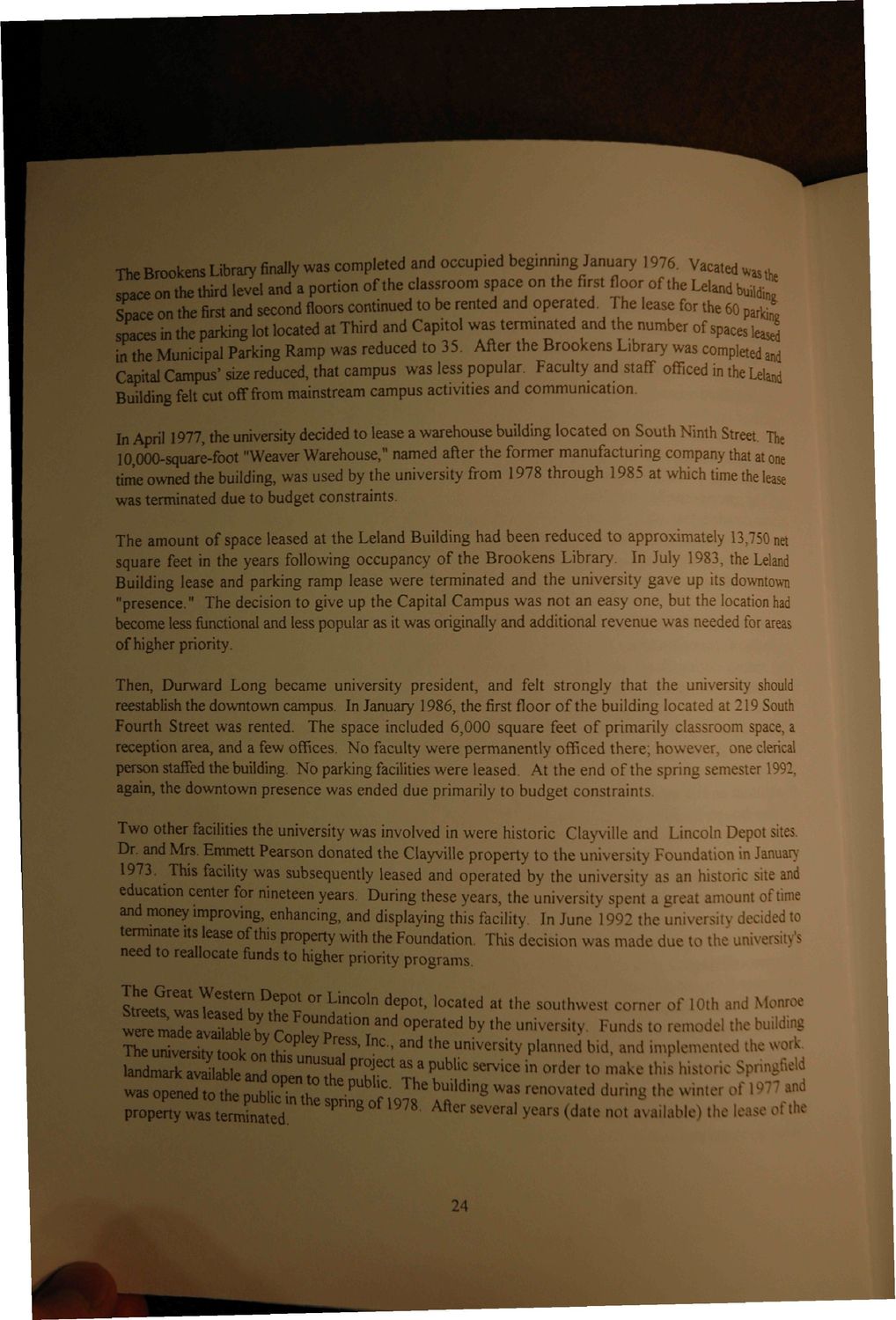| |
| |
Caption: UIS History 1969-1995 (Sangamon State Univ)
This is a reduced-resolution page image for fast online browsing.

EXTRACTED TEXT FROM PAGE:
IteBrookens Libraryfinallywas completed and occupied beginning January 1976. Vacated was the space on the third level and a portion of the classroom space on the first floor of the Leland buildj Space on thefirstand secondfloorscontinued to be rented and operated The lease for the 60 parki„s spaces in the parking lot located at Third and Capitol was terminated and the number of spaces leased 1 Parking Ramp was reduced to 35. After the Brookens Library was completed and Capital Campus* size reduced, that campus was less popular. Faculty and staff officed in the Leland Building felt cut off from mainstream campus activities and communication. In April 1977, the university decided to lease a warehouse building located on South Ninth Street. The 10,000-square-foot "Weaver Warehouse," named after the former manufacturing company that at one time owned the building, was used by the university from 1978 through 1985 at which time the lease was terminated due to budget constraints. The amount of space leased at the Leland Building had been reduced to approximately 13,750 net square feet in the years following occupancy of the Brookens Library. In July 1983, the Leland Building lease and parking ramp lease were terminated and the university gave up its downtown "presence." The decision to give up the Capital Campus was not an easy one, but the location had become less functional and less popular as it was originally and additional revenue was needed for areas of higher priority. Then, Durward Long became university president, and felt strongly that the university should reestablish the downtown campus. In January 1986, the first floor of the building located at 219 South Fourth Street was rented. The space included 6,000 square feet of primarily classroom space, a reception area, and a few offices. No faculty were permanently officed there; however, one clerical person staffed the building. No parking facilities were leased. At the end of the spring semester 1992, again, the downtown presence was ended due primarily to budget constraints. Two other facilities the university was involved in were historic Clayville and Lincoln Depot sites. Dr. and Mrs. Emmett Pearson donated the Clayville property to the university Foundation in January 1973. This facility was subsequently leased and operated by the university as an historic site and education center for nineteen years. During these years, the university spent a great amount of time and money improving, enhancing, and displaying this facility. In June 1992 the university decided to terminate its lease of this property with the Foundation. This decision was made due to the universit/s need to reallocate funds to higher priority programs. I f e ? ^ ^ ^ l D ! P C ? ° r L i n c o I n d e P o t > I o c a t e d a t t h e southwest corner of 10th and Monroe H B H K Foundation and operated by the university. Funds to remodel the building I I l i S ^ ^ H l P T • I n c ' a n d t h e ^versity planned bid, and implemented the work. i s * : R B l i l i f e >*« -»«i>*»°* *** •* ° P was opened to the o u h l S / f I S b u , I d , n S w *s renovated during the winter of 1977 and property was terminated me spnng of 1978. After several years (date not available) the lease of the 24
| |